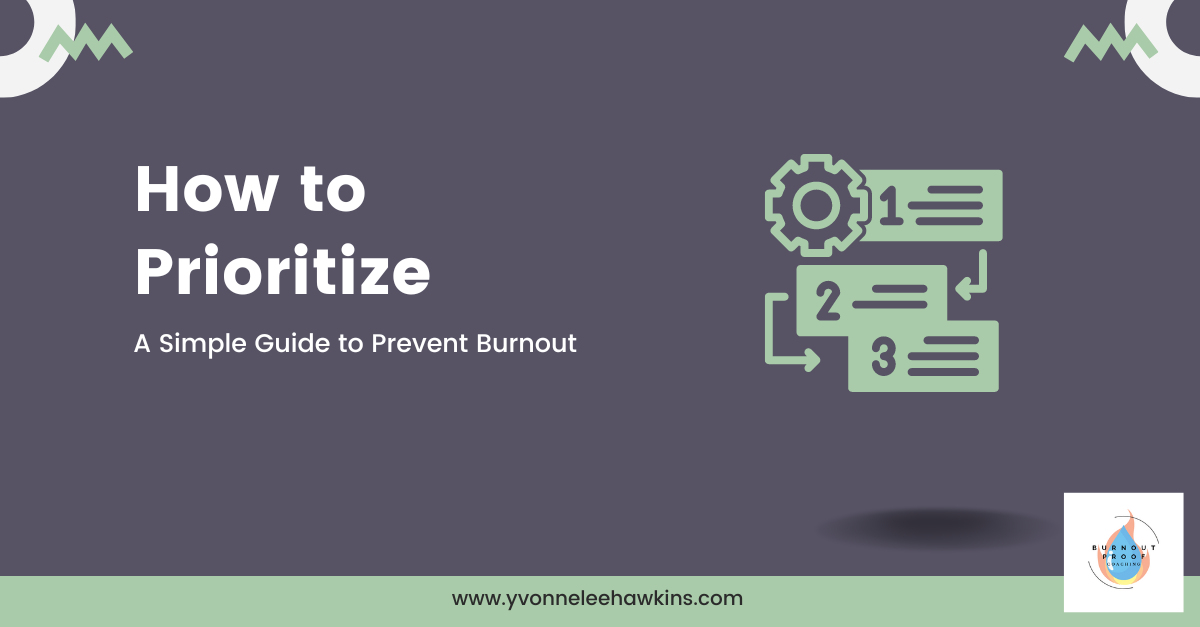A Simple Guide to Prevent Burnout
Life can get busy, and sometimes, it’s hard to figure out
what needs to be done first. This is why prioritization is so important—deciding
what tasks are most important and need attention right away. If you are a
manager or leader of a team or organization, this skill becomes a required
skill in order to be an effective leader. If you waffle, or can’t decide, you
have a high chance of burning out your team. But how do you choose? And once
you know what’s important, how do you share the workload? This guide will help
you understand these concepts in an easy way, so you aren’t tempted to burnout
yourself or your team out by doing it all.
Learning to Prioritize Tasks
Prioritization means choosing one thing over another, which
can be tricky, especially if emotions like guilt or responsibility come into
play. For example, if you always put others’ needs ahead of your own, you might
feel tired and overwhelmed because you never have time for yourself. It’s
important to learn how to make these choices without letting emotions cloud
your judgment. I’d say that
prioritization is one of the toughest skills a leader needs to learn. Without
it, your leadership is ineffective at best, destructive at worst.
To help with prioritization, there are several strategies
for deciding the importance and sequence of tasks. You can try different ones
to see which works best for you. You might even use one method for work and
another for your personal life. Let’s explore five popular prioritization
strategies:
The first is called the Eisenhower Matrix. The Eisenhower Matrix is a simple way to
divide tasks into four categories:
2. Important but not urgent (schedule for later)
4. Neither urgent nor important (don’t do)
This matrix method helps you focus on what truly matters and avoid wasting time on less important things. It also gives you permission to seek help (delegate) or simply
delete/ignore tasks that don’t add value.
Another method is called the ABC Method. Similar to the previous strategy, the ABC Method organizes tasks into categories. In this case, only three:
1. Must-do tasks with serious consequences if not completed.
2. Should-do tasks with mild consequences if not completed.
3. Nice-to-do tasks with no consequences if not completed.
This method is great for making sure you manage the most critical tasks first. It’s a good method for things like deciding what features a product needs to have when you have
limited development resources. The must do things are needed for a minimum practical
product, something customers will find useful. Added tasks may fall into should
do or nice to do that you can decide to add once the most important features
are developed.
The next method to discuss is called the Pareto Principle (or often referred to as the 80/20 Rule). The Pareto Principle suggests that 20% of your tasks will produce 80% of your results. The key is to figure out which tasks have the biggest impact and focus on those. For example, if
you’re a business owner, focus on the small set of clients that bring in most of your revenue. If you have a handful f clients that pay thousands of dollars for your services, it is better to
focus on making those services better than those that hundreds of clients only pay a few dollars for. The hardest part about this method is figuring out which tasks bring the most value. However, it is worth taking time to try to figure it out.
Another popular prioritization strategy is called the MoSCoW Method. It is based on an acronym that combines tasks into four different groups:
1. Must have
2. Should have
3. Could have
4. Won’t have (this time)
This is especially useful in managing projects, ensuring that the most important needs are met first. By prioritizing tasks in this order, you can always add in the less important tasks if you find you have extra time and resources available. If you don’t, at least the most important
parts are covered. What I like about the last category (Won’t have this time) is that it gives you a list of improvements that can be added later.
The fifth strategy to discuss today is called “Eat the Frog.” The “Eat the Frog” method involves tackling your most challenging or important task first thing in the morning. By doing the hardest task early, you reduce procrastination and build momentum for the rest of the day.
This strategy assumes that if you can get the biggest, most important task done while you still have will power, you will then gain momentum to tackle smaller tasks. While I like this idea, it can sometimes backfire if you have ADHD, or you are experiencing extreme burnout. If the “frog” in this case seems like too much, you can be discouraged and end up not getting anything done.
If that happens, I’d suggest a bonus strategy that I call the “snowball effect.” It’s the reverse of eating the frog. It is to do as many small, manageable tasks as you can so that you can build up momentum and gain the energy you need to tackle the big tasks. Here you have to lean into your intuition and see what method would work best for you at this point in time.
Using any of these strategies can help you make decisions more easily, streamline your workflow, and ensure that the most important tasks get done. You can do one or all of these strategies as you see fit based on what you are working on.
Prioritization is a vital skill for managing your workload and leading a team effectively. Whether you’re organizing your day or running a business, knowing how to prioritize tasks can
help you achieve more and reduce stress. Remember, the key to success is not
doing everything, but making smart choices about what to do and when.
A leader who is able to prioritize effectively is an easy leader to follow, because they
give good guidance. Once you have mastered this skill it is important to also
teach it (and your how you think about it) to your team members. Leaders lift
up others, after all. By using this skill, you can ensure that both you and your
team don’t get burnt out and are able to do valuable and efficient work for
many years to come.
And if you are too burned out and overwhelmed to even begin to use any of these strategies it might be time to get some help. Find a coach, therapist, or doctor who can help you reverse out of the physical, mental, and emotional symptoms of burnout so you can get back to living in healthy balance.
Remember, Self-care isn’t selfish…it’s required.
Let me know if this topic added value for you. Please like and subscribe if you want more wellness topics like this. Also tell me what other wellness topics you’d like to read about by commenting or DM’ing me. I always love suggestions and feedback!
Yvonne Lee-Hawkins, IPHM, is a holistic wellness coach, stress strategist, and writer. When she is not working, she loves to go on nature adventures with her family, in the Pacific Northwest where they call home. You can find out more on her website, or follow her on LinkedIn, Medium, or Instagram.
If you want some help with time management, Burnout recovery or general wellness,

